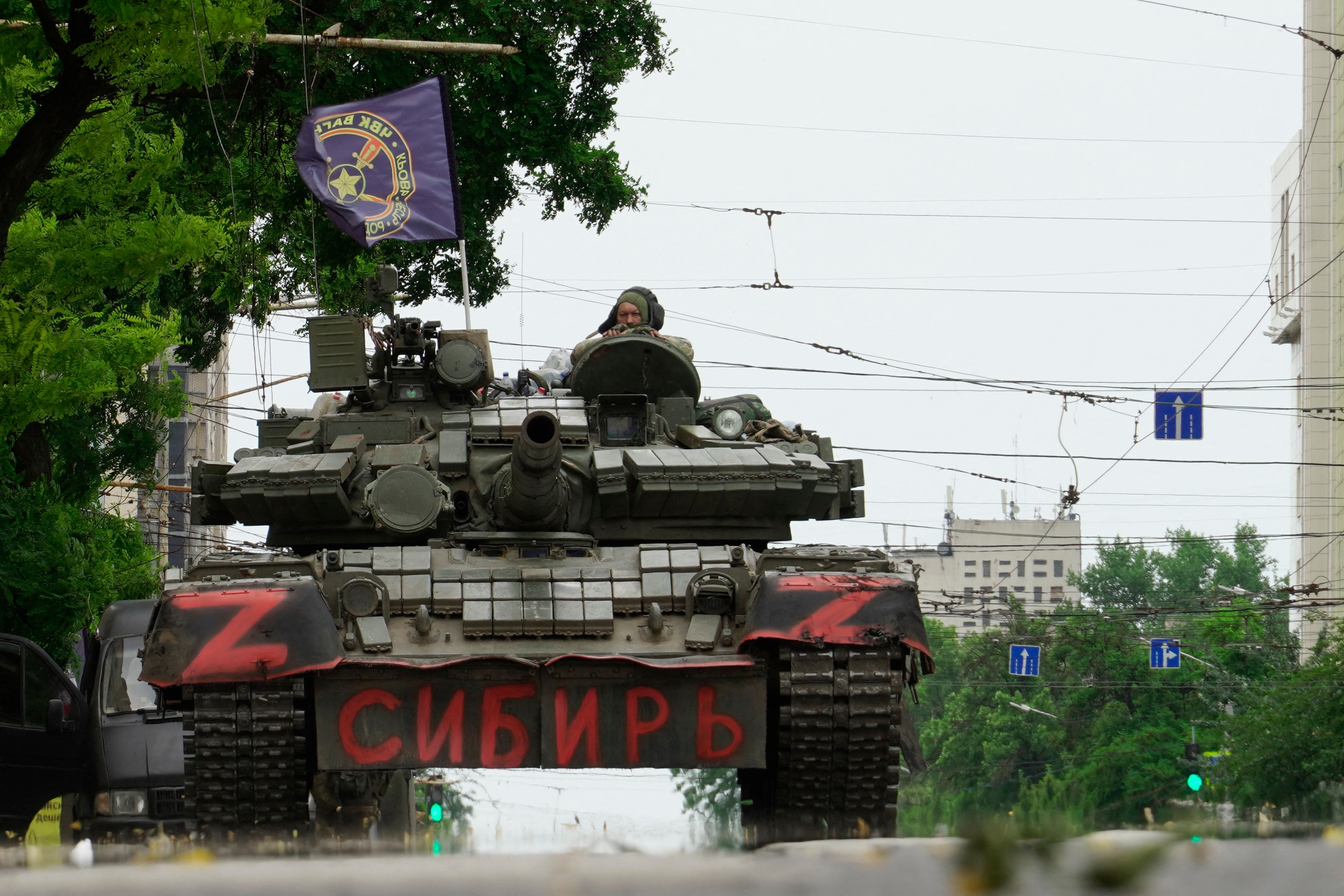Russia has lost as many tanks in Ukraine war as it had prior to the conflict, think-tank claims
More than 3,000 tanks have been damaged or destroyed in two years of fighting after Moscow failed in its initial blitzkrieg aimed at capturing the capital, Kyiv

Russia has lost as many tanks in the Ukraine war as the total number it had in active service across its armed forces before Vladimir Putin launched his invasion, according to a leading think tank.
More than 3,000 tanks have been damaged or destroyed in two years of fighting after Moscow failed in its initial blitzkrieg aimed at capturing the capital, Kyiv.
To make up for the shortfall the Russian millitary has been resupplying the frontline from its strategic reserves of armour while urgently boosting defence spending and putting its economy on a war footing, says the analysis by the International Institute for Strategic Studies (IISS).
Ukraine, on the other hand, has had to rely heavily on Western weapons to offset its own losses with its citizens army having to learn battle skills rapidly while engaged in combat.
Using arms from the US and Europe, as well as those being developed at home, the Ukrainians have struck back deep behind enemy lines into Russia and also damaged the capabilities of Moscow’s Black Sea Fleet based in Crimea.
A rush by Nato member states to boost their military budgets to help Ukraine, as well as prepare their defences to face prospective future Russian aggression, has led to a significant increase in arms spending.
The Gaza War and armed confrontation in the Middle-East, China’s sabre-rattling in the Indo-Pacific, strife in central Asia including conflict between Armenia and Azerbaijan, and military coups in west Africa provided added impetus to weapons sales.
Global arms spending has grown by nine per cent to a record $ 2.2 trillion with non Nato states increasing their budgets by an average of 32 per cent, says IISS in its annual ‘ Millitary Balance’ report.
China and Russia have ramped up their millitary budgets by 30 percent and Iran’s burgeoning arms industry has been much in evidence with drones supplied by the country being used by Russia in Ukraine, and anti-ship missiles by the Houthis in the Red Sea.
Defence budgets have come into focus this week after Donald Trump’s declaration that he would “ encourage” Russia to attack any Nato member states which did not spend enough on its forces as part of the Alliance.
Speaking at an election rally, Mr Trump claimed that he had told an European leader that he would tell Moscow to “ do whatever the hell they want”, to countries which did not pay their bill.
The White House condemned the comments as “appalling and unhinged”. Nato Secretary General Jens Stoltenberg said any suggestion that “allies will not defend each other undermines all of our security”, putting soldiers from the Alliance countries at risk.
The aspiration of a world free of nuclear arsenals is fading with China adding missile silos and the US modernising warheads and delivery systems, says the report.
There has been heightened interest in a wide range of weaponry such as such as artillery and air defence, alongside a drive for new technology including hypersonic glide and cruise missiles.
The IISS said “ the Military Balance 2024 highlights the extent to which the world has entered a more dangerous period in the last twelve months, how increased tensions and conflict have reshaped the global defence-industrial landscape.Our new data shows how countries are reshaping their equipment and spending plans and how their regional ties are changing in accordance with geopolitical reality.”
Subscribe to Independent Premium to bookmark this article
Want to bookmark your favourite articles and stories to read or reference later? Start your Independent Premium subscription today.

Join our commenting forum
Join thought-provoking conversations, follow other Independent readers and see their replies